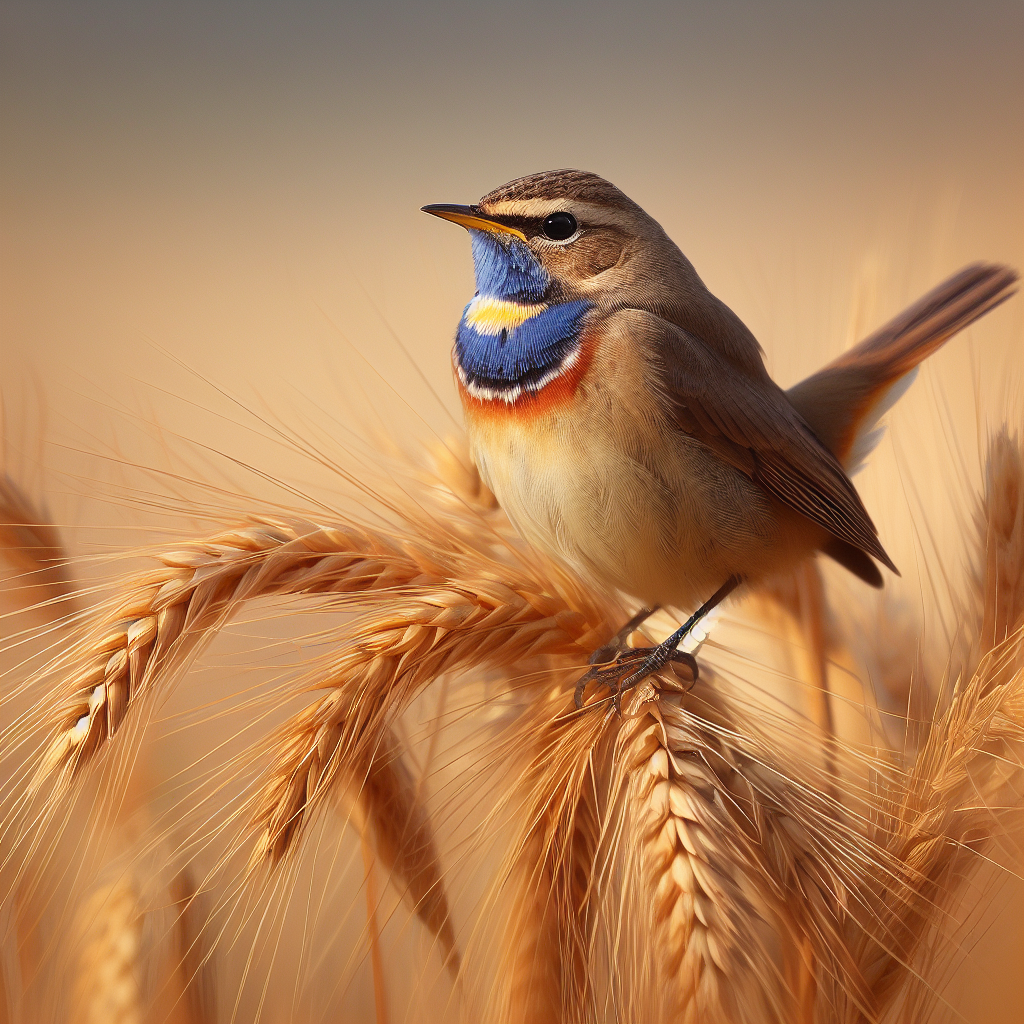Most beautiful small birds - Sykalo Eugen 2024
Luscinia svecica (Common Bluethroat)
- Identification:
Species name: Common Bluethroat, Blue-throated Robin
Scientific name: Luscinia svecica
Family: Turdidae (Thrushes)
Order: Passeriformes (Songbirds)
Subclass: Neornithes (Modern birds)
Class: Aves (Birds)
- Description:
Size: Small songbird, about 14-15 cm (5.5-5.9 in) long with a wingspan of 24-26 cm (9.4-10.2 in).
Body shape: Slender and streamlined, with a long tail and a long, straight bill.
Plumage color:
- Males (breeding season): Strikingly colorful. Bright blue throat bordered by white, rusty chest, brown upperparts, and buff underparts.
- Females and non-breeding males: Duller, with brownish throat and upperparts, and less defined markings.
Beak: Long, straight, and pointed, dark gray in color, suitable for catching insects.
Legs: Long and pale brown.
Tail: Long and often cocked upright during displays.
- Behavior:
Method of feeding: Forages on the ground and in low vegetation, catching insects and other invertebrates.
Reproduction: Builds cup-shaped nests on the ground or in low vegetation. Lays 4-6 pale blue eggs with reddish markings. Both parents care for the young.
Movement: Migratory, breeding in Europe and northern Asia and wintering in Africa and southern Asia.
Communication: Loud, melodious song with whistles and imitations of other birds. Males sing to defend territory and attract mates.

Don't let the "common" in its name fool you - the Common Bluethroat is anything but ordinary. This Eurasian songbird packs a punch of scientific intrigue and captivating quirks, hidden beneath its unassuming brown cloak. Get ready to be surprised by this feathered chameleon:
Master of Metamorphosis: The Common Bluethroat isn't just one bird; it's a living kaleidoscope of colors. Males switch between three distinct plumages during the breeding season - a plain brown winter coat, a vibrant bluethroat during territory defense, and a flashy red breast for attracting mates. It's like a feathered fashion show with built-in costume changes!
Melody Maestro: The Common Bluethroat's song is no simple chirp. This avian Mozart weaves complex melodies, mimicking other birds, incorporating musical phrases, and even adjusting their tune based on the listener. Imagine a feathered composer with built-in remix capabilities!
Territory Twists: Male Bluethroats fiercely defend their territory, but their tactics might surprise you. They engage in elaborate displays, puffing out their chest feathers, flashing their blue throats, and even singing mock duets to confuse rivals. It's like a feathered battlefield with built-in smoke and mirrors!
Unexpected Nest Architects: Don't expect a typical treetop nest with this bird. Common Bluethroats build their cozy homes low to the ground, often nestled among vegetation or even hidden within abandoned rabbit burrows. They're the feathered ground dwellers with a knack for camouflage!
Feathered Firefighters?: Recent research suggests Common Bluethroats might play a role in preventing wildfires. Their diet of insects includes those that feed on dead plant matter, potentially reducing fuel loads and slowing the spread of flames. Talk about feathered firefighters with built-in bug vacuums!
Symbiotic Symphony: Bluethroats play a crucial role in the ecosystem. By controlling insect populations, they help maintain the health of grasslands and meadows. This beautiful dance of life showcases how feathered chameleons contribute to the vibrant tapestry of nature.
Winter Wanderers: Common Bluethroats migrate south for the winter, embarking on impressive journeys across continents. Some populations travel thousands of miles over water, utilizing their internal compass and stellar navigation skills. They're the feathered Odysseus with built-in GPS and star charts!